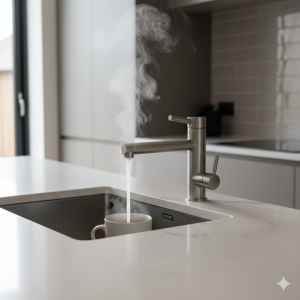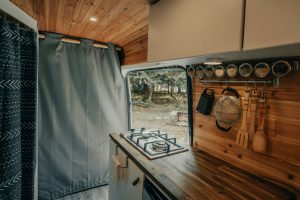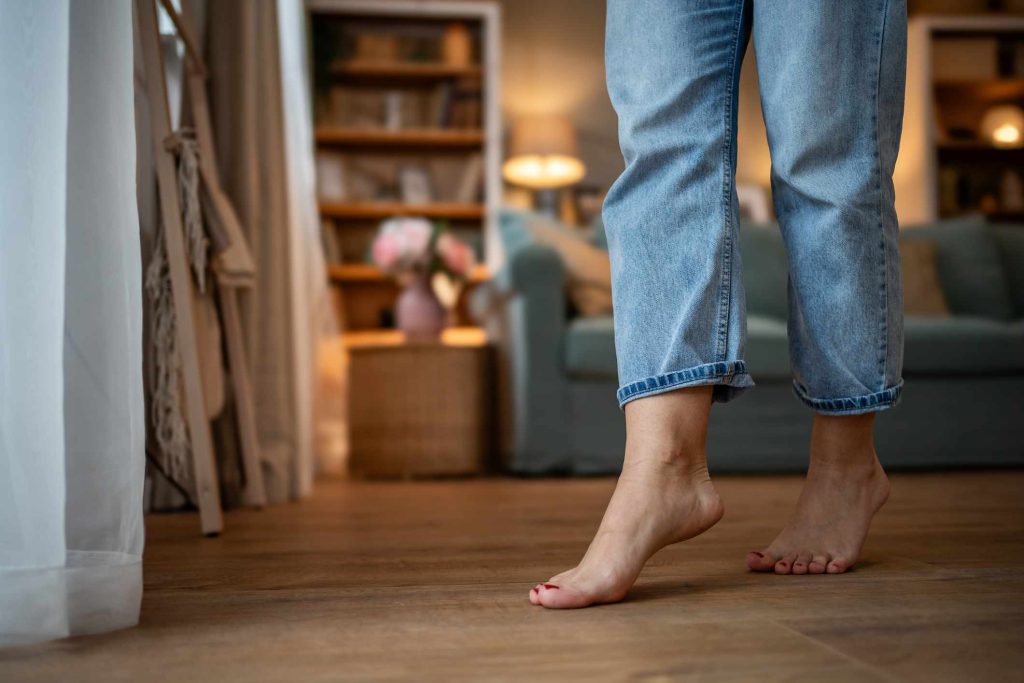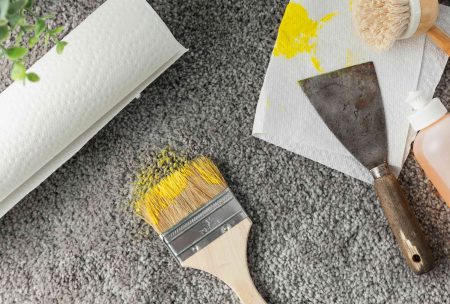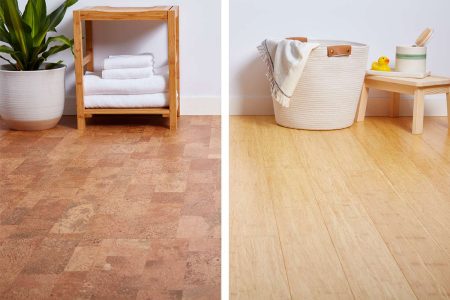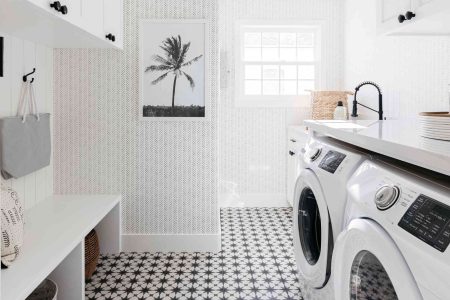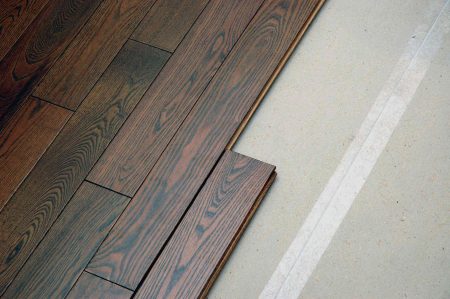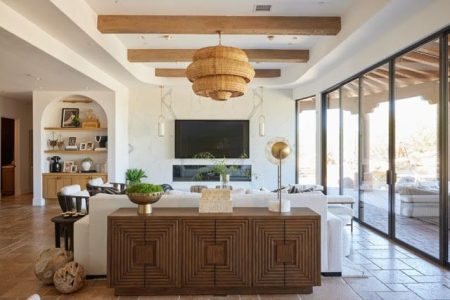Squeaky floors are often associated with hardwood, but depending on the source of the problem, even a tile or carpet floor can squeak. Sometimes a squeaky floor occurs as a natural reaction to the normal seasonal cycle from dry winters to humid summers, though squeaky floors can also be caused by improperly fastened subfloors, loose nails, or loose screws.
The good news is that you can fix squeaky floors—here’s how to do it.
How to Find the Source of the Squeak
Before you can fix a squeaking floor, you need to locate the source of the squeak. If the squeaking floor is open from below, this makes it much easier to find. Have a second person walked around on the squeaky floor while you listen and watch for the subfloor movement from below. You can also look for loose nails or any subfloor seams that appear to be rubbing together.
If the floor is not open from below, then you will not be able to visually find the squeak. However, you can find the general area of the noise by moving slowly and carefully across the floor. Measure the location of the squeak in relation to one or more walls or any other objects that are visible from below to help narrow down the precise location.
Want more home reno project tips and inspiration? Sign up for our free daily newsletter for the latest how-tos, reno guides, and more!
Lubricate the Floor
The easiest and most commonly used solution for fixing a squeaky floor is to apply a lubricant. Depending on the floor, the type of lubricant can vary. For instance, if your floor has a wax coating instead of urethane or a varnish, then you may be able to work liquid wax in between the boards to stop the squeak.
You can also use powdered soapstone, powdered graphite, talcum powder, or even mineral oil as a lubricant to prevent the floor from squeaking. Liquid lubricants can be applied directly or with a cloth. For powdered lubricants, pour the powder onto the area where there is a squeak, then place a towel over the powder. Step on the towel repeatedly to help the powder squeeze into the gaps between the boards.
Set Up a Humidifier or Dehumidifier
When a dry winter turns to humid summer, the subfloor can swell, causing the boards to rub against each other and the floor to squeak when walked on. However, this problem can be resolved by investing in a humidifier or dehumidifier.
If the floors start squeaking during hot, humid weather, then using a dehumidifier can reduce the swelling and stop the boards from rubbing together. Similarly, if the squeaking seems to occur in the winter when the dry air soaks up the moisture indoors, then setting a humidifier can increase the humidity in the room to prevent the floor from creaking, squeaking, or cracking.
Shim the Subfloor
If you have access to the floor from below, then you may be able to stop the floor from squeaking by shimming the subfloor. Locate the subfloor boards that are causing the problem, then carefully drive a shim (a wedge) into the gap between the subfloor and the joist. Apply construction adhesive to the shim and to the seam between the joist and subfloor.
Brace the Subfloor
Shimming the subfloor may not be enough if there are two or more subfloor boards that appear to move and squeak. Instead, you can use a brace to support the subfloor from underneath.
Simply take a measurement of the area, cut a 1×4 board to the correct length, then slide the brace into position and secure it with screws. You can also use steel bridging to brace the floor by sliding the long metal support under the subfloor, then nailing it into position below the subfloor boards.
Drive Screws From Above or Below
The main goal when dealing with squeaky floors is to prevent the floors from moving. If the floor is open from below, You can drive screws up through the subfloor and into the finished hardwood. Just be sure to use short screws that won’t penetrate the top layer of the finished flooring.
If the floor is not open from below, then you can drive screws through the hardwood from above. Start by drilling a pilot hole to avoid cracking the hardwood, then drive a screw through the hardwood into the subfloor. The screw head should end up below the surface of the hardwood so that you can fill in the hole with wood filler to match the color of the floor.
-
What is the best lubricant for squeaky floors?
With a wide range of products available, it’s difficult to state which specific product is the best lubricant for a squeaky floor, but a powdered soapstone, powdered graphite, or mineral oil lubricant are effective options to silence a squeaky hardwood floor.
-
Should I worry about squeaky floors?
In most cases, a squeaky floor isn’t a big concern. However, if the floor feels spongy or bouncy, it could indicate the squeak is a sign of rot. Similarly, a floor can slowly develop creaks and squeaks as it ages, but if the floor suddenly starts squeaking one day when it wasn’t the day before, then you may have a structural issue. Due to the potential for problems, it’s worth it to have the floor inspected if you are not sure whether to repair the squeak or let it be.
-
Is it expensive to fix squeaky floors?
Hiring a professional to fix a squeaky floor will cost on average between $200 and $1,000. DIYers with the time and skill to handle this repair can eliminate the labor portion of the cost, reducing the overall price of the job.
Read the full article here
